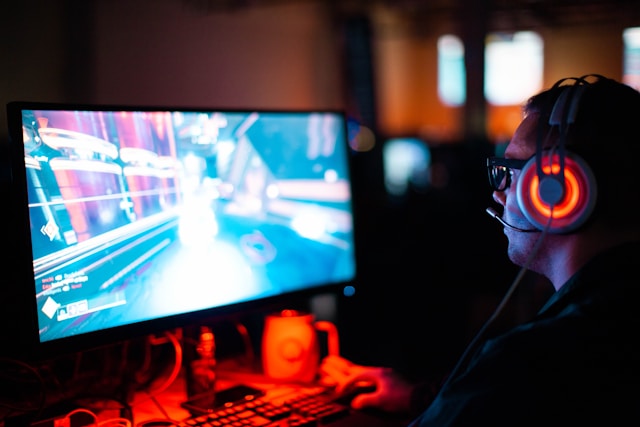Nintendo Switch 2 Reveal and Launch Plans
The upcoming Nintendo Switch 2 reveal has sparked a lively debate among fans and industry observers. A reliable source from Insider Gaming has provided new details on the system’s launch and game release schedule.
The information comes as excitement builds ahead of the official reveal scheduled for 2 April. Details on the planned launch window, release strategy and developer kit distribution have attracted considerable attention.
Announcement Event and Release Date
Industry insiders have pointed to a reveal event that promises to showcase the new console’s hardware, software and expected improvements in online functionality. The reveal is said to take place in early April, with the system itself expected to arrive in stores in June.
This gap allows retailers to prepare for pre-orders and ensure that the necessary stock is available, especially as the new console will continue to support physical media.
Retailers and distributors have long needed a window between a reveal and the actual release date. With the planned June launch, there is sufficient time for shops to update their inventory, organise in-store pre-orders and set up special displays.
This approach is likely to smooth the transition between announcement and sale, giving fans a chance to read up on the system and its features before they rush to buy.
Three-Phase Game Release Strategy
The launch strategy for the Nintendo Switch 2 involves a three-phase approach to game releases. According to the report, the first phase will focus on first party titles. This is a sensible plan since many fans purchase Nintendo hardware primarily for its exclusive games.
The second phase is expected to bring additional titles from third party developers, with a launch window around October and November. The third and final phase of game releases is planned for the holiday season, when the demand for new entertainment is at its highest.
Phase Details
A breakdown of the planned phases is provided below:
- Phase 1:
- Focus on first party games
- Games available on launch day
- Focus on first party games
- Phase 2:
- Third party developers are set to deliver titles from October to November
- This phase should include many well-known publishers
- Third party developers are set to deliver titles from October to November
- Phase 3:
- Additional third party games will be released during the holiday period
- Aimed at maintaining a steady stream of new titles after the initial launch
- Additional third party games will be released during the holiday period
| Phase | Estimated Timeframe | Key Focus |
| Phase 1 | Launch Day | First-party titles |
| Phase 2 | October to November | Third-party titles and publisher games |
| Phase 3 | Holiday Period | Extra third-party releases |
Developer Kit Controversy
One of the more contentious points in the report relates to the distribution of developer kits. It is claimed that smaller third party developers and independent studios might not receive their kits until June. However, industry commentators have questioned this assertion. Major publishers such as Capcom, Square Enix, Konami and EA are likely to have received their kits well before the launch to enable them to prepare games for the reveal.
Developer Kit Timeline
| Developer Type | Expected Kit Arrival | Notes |
| Major Publishers | Before launch | Likely to have kits in advance for day one games |
| Smaller Studios | June | Expected to receive kits later in the cycle |
| Independent Developers | June or later | Dependent on scale and pre-existing partnerships |
The discrepancy in timing has led some to question whether the report may have overemphasised delays for third-party support. The view held by some industry experts is that larger companies already have access to the hardware and will be quick to deliver games on the new system. They expect that, while there may be a delay for some smaller developers, many established third-party studios will participate on day one.
Media Access and Hands-On Event
Additional information has emerged about a hands-on session planned for select media and content creators. This session will allow those invited to try out the new console and some of its launch titles for a few hours. The event is scheduled to follow closely after the direct presentation of the system.
A few media figures have voiced their disappointment over not receiving an invitation. Their concerns highlight an ongoing tension in the gaming industry where access to new hardware and early testing opportunities can be limited to a chosen few. This approach has both supporters and detractors.
Pros and Cons of the Hands-On Event
- Pros:
- Provides early feedback on system performance and game quality
- Allows the media to generate informed reviews and build public interest
- Supports a controlled environment to manage leaks and misinformation
- Provides early feedback on system performance and game quality
- Cons:
- Excludes some influential voices from the initial experience
- May lead to biased coverage if only a select group is given access
- Creates a sense of exclusion among certain segments of the media
- Excludes some influential voices from the initial experience
Impact on Retailers and Consumers
The planned launch strategy is likely to have a significant impact on both retailers and consumers. Retailers will have time to prepare their stock and marketing materials. The staggered release of titles should help maintain consumer interest over a longer period. It also reduces the risk of a sudden drop in game releases after the initial launch window.
Consumers who have owned previous Nintendo systems can expect a mixture of familiar first party games and new third party titles. The initial focus on first party games is expected to attract long-time fans. As the game library expands with more titles from third party developers, there will be ample choice for a wider audience.



